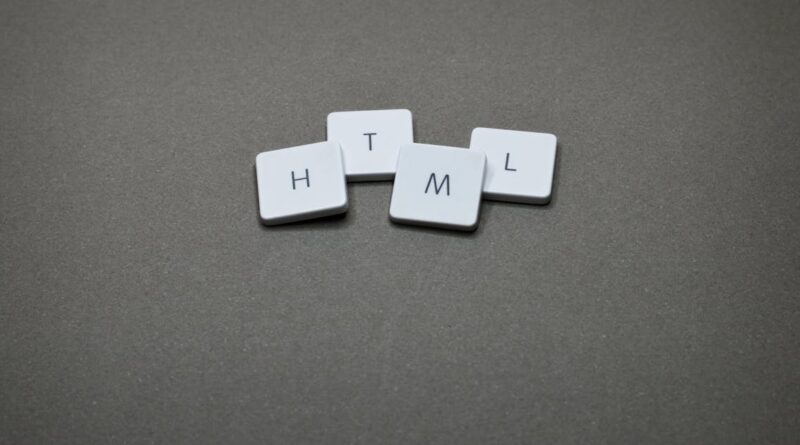What is HTML? Find out how this feature works
Have you ever wondered: “What is HTML?” British scientist Tim Berners-Lee created it, and the first version was released in 1991. It is based on the internet’s hypertext system, which is a bundle of data that, when structured, allows the user to create a website.
Today, HTML specifications are monitored and developed by the World Wide Web Consortium — W3C —, with the latest version updated in 2014. Want to know more about what HTML means ? Follow the article below and find out.
What is HTML?
Acronym for HyperText Markup Language — HTML is the base component of the web. This means that it allows the construction of websites and the insertion of new content, such as images and videos, through hypertexts.
Hypertexts are the combination of several elements — words, videos and content — which, when connected, establish a data network that allows communication, storage and sharing of information.
For example, when visiting a website , you will find different information with different formatting, such as paragraphs, bullets and different fonts. Well then, this structuring is carried out through HTML .
What is the function of HTML?
Imagine that you need to build a website from scratch with information about your company. In this case, you will need to know the structure of HTML , creating a document in Notepad and adding codes — tags — which will indicate paragraphs, text wrapping, spacing, images, among others.
In general, on a single website, there are several HTML documents, creating pages such as homepage, product page and company information. In each tab, there is a different code.
Tags
Each page on a website is made up of HTML tags . They are codes that guide the structure of the document, such as size, font and line breaks.
With these markups, the HTML code creates structures and hierarchies of information, dividing it into sections, which helps with the customer journey . Furthermore, it can be done in any text editor, even with Notepad.
Currently, HTML can be created with more than 140 code options to structure content on the web, however, some have fallen into disuse. So, check out the main HTML tags :
- <head>: defines the beginning of the HTML;
- <title>: indicates the title;
- <body>: used to demonstrate the beginning of the content;
- <h1>, <h2> and <h3>: tags used to indicate titles and subtitles;
- <strong>: adds bold to the text;
- <italic>: signals formatting of the content in italics;
- <p>: inserts the paragraph,
- <a href=’LINK>: tag used to insert a link.
HTML: what is the difference with HTML5?
Since the first version created by Tim Berners-Lee , HTML has evolved and is now in its fifth version: HTML5, which added new features to the language. Before this last update was made in 2014, the fourth version had only been changed in 1999.
With the old version of HTML, it was possible to introduce videos and audios, however, it was necessary for Flash Player to intermediate this process. Then, with HTML5, this could be done using some tags.
In addition to incorporating videos and audio files into the code, this new version introduced semantic improvements. In other words, the new tags are able to communicate with the browser, indicating the meaning of the content and helping it to be located by search engines.
The relationship between HTML, CSS and JavaScript
Now that you know what HTML is, let’s understand the relationship between JavaScript, HTML and CSS (Cascading Style Sheets). Although HTML is a language that has several functions, it cannot create dynamic content structures.
Therefore, in general, company websites usually include two other languages: CSS and JavaScript . While the first is responsible for including color, layout and animations, JavaScript allows the inclusion of photo galleries and pop-ups , for example .

